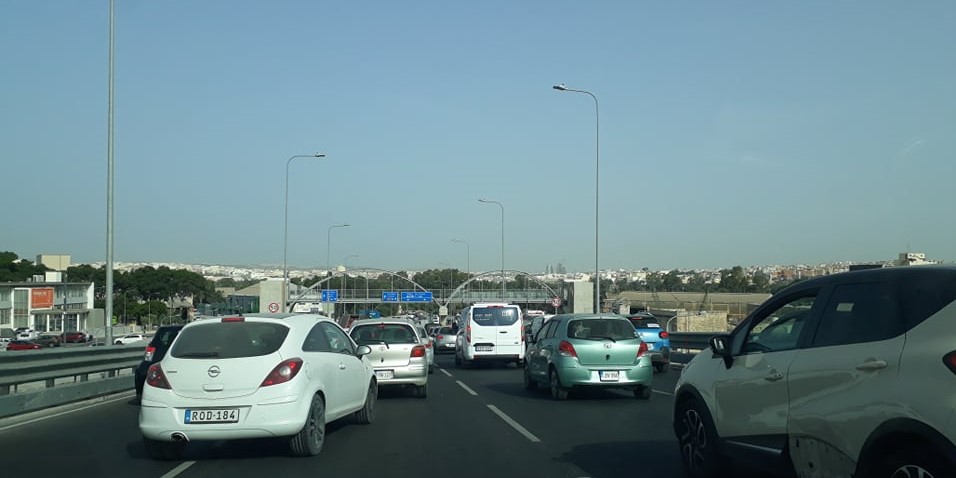Constant gridlock within a maze

Traffic congestion and the constant gridlock in certain hot spots have made a strong comeback as life is coming back to a degree of normality with the easing of the Covid-19 restrictions. Unfortunately, the situation is no better than it was prior to the start of the outbreak. Arguably, the situation has deteriorated. While remote working has become more mainstream, the fleet of cars on Maltese roads continued to soar. By the end of March, the stock of cars on the island had reached 404,303, which is an increase of 29,262 in just three years.
The situation has been further compounded by concurrent roadworks at every level ranging from residential roads to major arterial thoroughfares. With an estimated 121 projects underway it is no surprise that the morning and afternoon rush hours are becoming worse by the day. However, some of these problems are self-inflicted. It seems that lack of coordination, poor signage and shoddy works have become endemic despite the numerous pledges made along the years including the setting up of State agency Infrastructure Malta which was meant to raise standard. As things stand, it only takes a car to break down in a major thoroughfare to bring large parts of the island to a halt, as was the case of an open culvert in the St Venera Tunnels a few days ago which caused traffic all the way to Tal-Barrani Road in Żejtun.
In a recent interview with the Voice of the Workers Weekly Transport Minister Ian Borg acknowledged that the situation was far from rosy but took solace from the prospect that in a few months’ time the situation would improve as major works like the refurbishment of the Kirkop, St Venera, Regional Road and Tal-Qroqq Tunnels would be completed, while the Central Link Project would be ready. Though these projects, including the multi-level intersection at Marsa are mitigating the situation, if the current demographic growth persists, this will only be a short-term solution. Despite the millions being invested to improve the road network, the situation is still close to saturation point as a delay at point A will have ramifications several kilometres away.
Looking ahead, a solution could be an alternate form of mass transport which, unlike buses, is not stuck in traffic jams. Scooters, bicycles, pedelecs and motorcycles might appeal for some but surely not the majority. Moreover, Malta’s topography, the lack of dedicated lanes and reckless driving could be an issue.
The proposal to have a fully-fledged metro crops up on the country’s agenda every now and then, but so far it has not materialised. Ideas verge from a modest line linking the capital to Sliema and St Julian’s to a nationwide network stretching all the way to Gozo through the planned underwater tunnel. So far, such plans are all pie in the sky. Judging by the recent comments made by the transport minister, there seems to be little appetite for such project as it seems the island does not have the numbers to make the service financially viable with the exception of the short route between St Julian’s and Gżira. With the country’s finances stretched to the limit due to the huge financial outlay on Covid-19 measures such consideration will have more weight for sure.
Doing nothing, however, may also come at a huge cost. There is ample evidence that if traffic keeps rising at the current rate it will start hurting the economy. Coming late to work and delays in deliveries will hurt productivity and ultimately make Malta less attractive to investors.
So, what is the way forward? Does is have to be Hobson’s choice? One option could be to take stock of the situation by carrying a study to map the commuting patters of employees from work to those living in a particular region. This could serve as a basis to set up regional park-and-ride facilities which caters for workers’ needs. Under such model commuters would only drive to this facility and make the rest of the journey by means of shuttle buses serving their place of work. The success of the system would hinge in managing to remove a critical number of cars during the morning and afternoon rush hours, so that buses would not get stuck in traffic. One could also opt to offer incentives to lure motorists use the system or else take a more draconian approach by banning private vehicles from certain routes during the rush hour in order to increase patronage of this facility. Regardless of the approach, authorities should seriously carry out the study. Doing nothing could mean having to choose between the lesser of two evils in the near future
